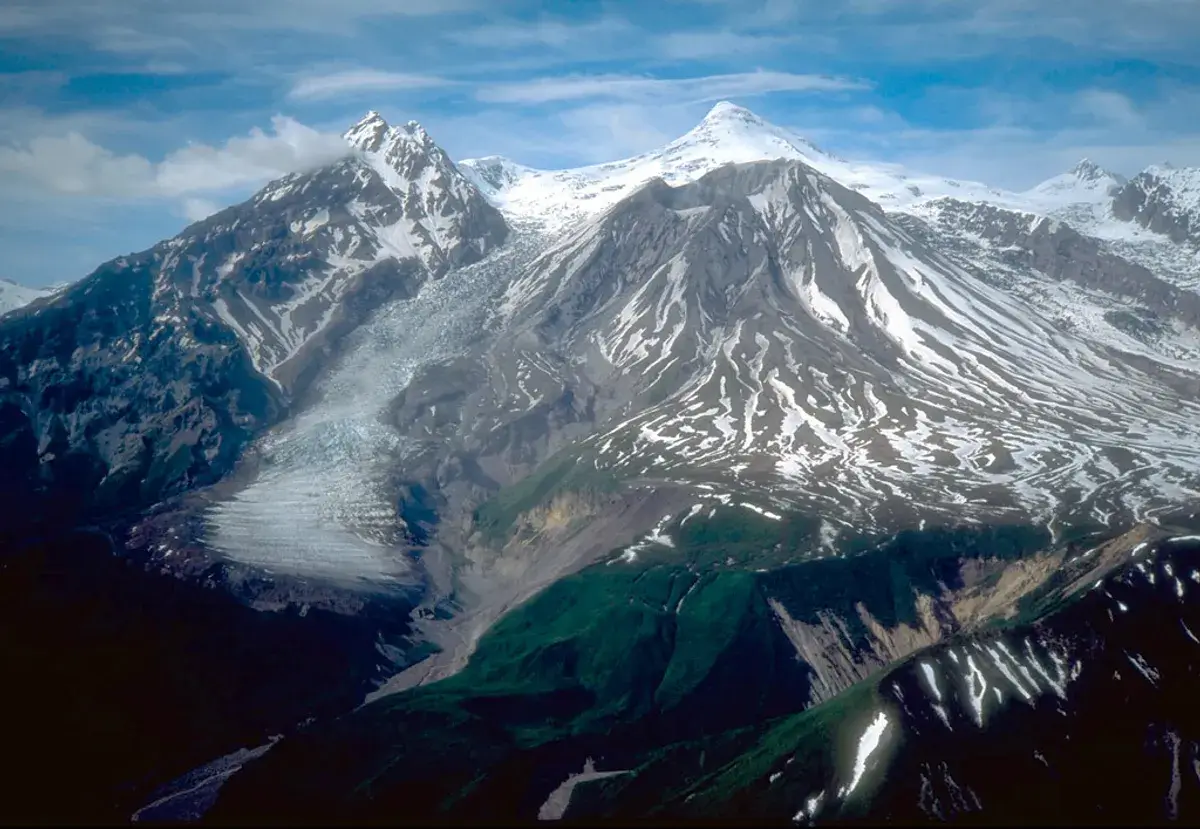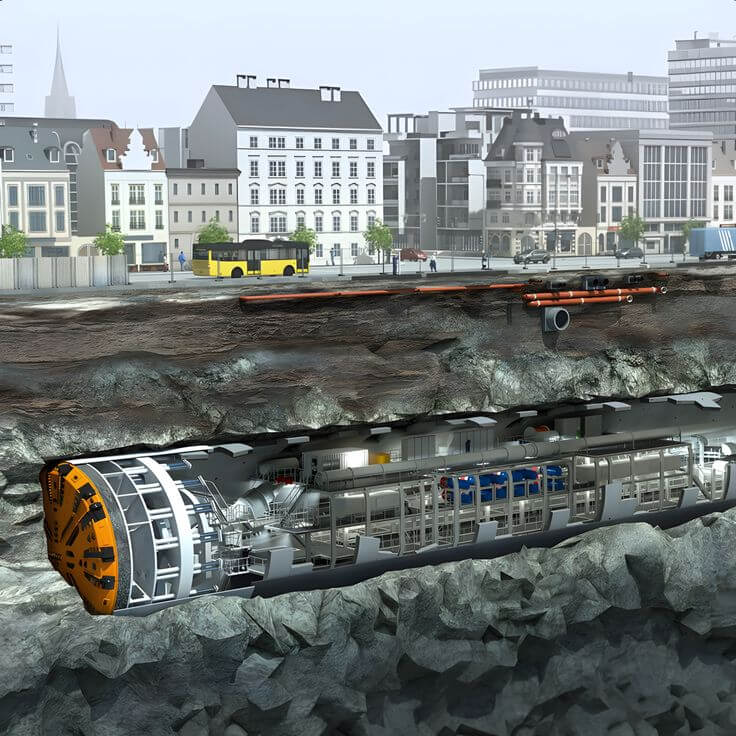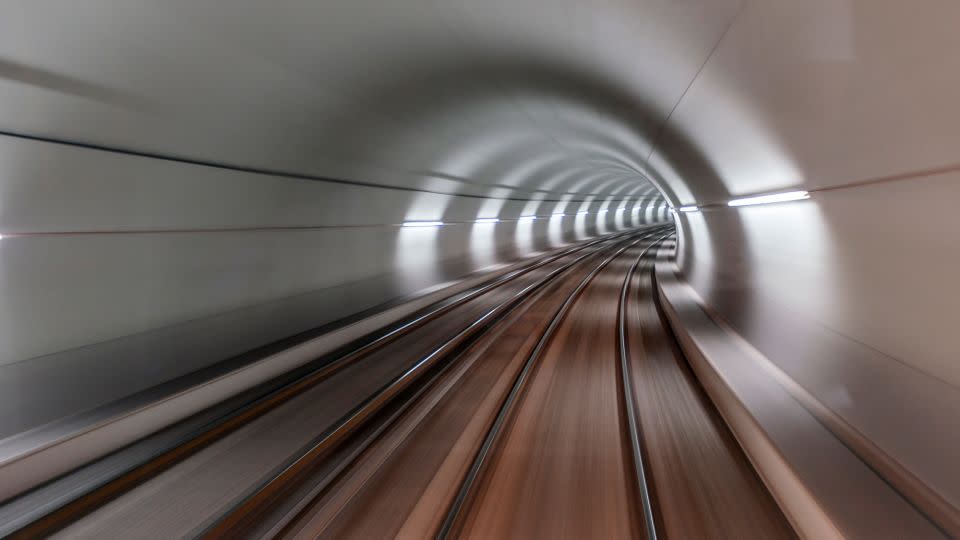
Eruption May Be Imminent In Alaska As Earthquakes Increase Underneath Mount Spurr
In recent months, earthquakes have been detected underneath the volcano at a rate of 125 times per week.
By: James Felton | IFL Science
Geologists are closely monitoring Mount Spurr in the Aleutian Arc of Alaska, USA, after continued volcanic unrest. The Alaska Volcano Observatory (AVO) monitoring the situation says that an eruption is possible in the coming days and weeks.
Mount Spurr is an ice and snow-covered stratovolcano complex, meaning that it is a large, cone-shaped volcano formed by lava flows, pyroclastic deposits, mudflow deposits, and lava domes. The volcano has erupted twice in recorded history: once in 1953 and once in 1992. These eruptions came from the Crater Peak flank vent 3.5 kilometres (2 miles) south of the peak’s summit, rather than from Mount Spurr itself.
“These eruptions were relatively small but explosive, and they dispersed volcanic ash over areas of interior, south-central, and south-eastern Alaska. Individual ash clouds produced by the 1992 eruption drifted east, north, and south. Within a few days of the eruption, the south-moving ash cloud was detected over the North Atlantic,” the US Geological Survey (USGS) explains of the volcano.
“Pyroclastic flows that descended the south flank of Crater Peak during both historical eruptions initiated volcanic-debris flows and lahars that formed temporary debris dams across the Chakachatna River, the principal drainage south of Crater Peak. Prehistoric eruptions of Crater Peak and Mount Spurr generated clouds of volcanic ash, pyroclastic flows, and lahars that extended to the volcano flanks and beyond.”
Since April 2024, there has been an increase in the number of earthquakes detected beneath the volcano, to around 30 a week. While this doesn’t necessarily indicate an eruption is imminent, activity increased again in October 2024, and between then and February 6, there have been around 125 earthquakes detected beneath the volcano per week. The largest of these, detected on January 2, was of magnitude 2.9.
“The current unrest at Mount Spurr strongly suggests that new magma has intruded into the crust beneath the volcano,” AVO said in a February 6 statement.
AVO believes that a few scenarios are possible, given the recent activity. One is that no magma reaches the surface, and the earthquakes subside over the course of several months.
Another is that there is an eruption similar in magnitude to the 1953 and 1992 eruptions. This scenario would see “one or more explosive events lasting one or a few hours [that] would produce ash clouds carried downwind for hundreds of miles, and the uninhabited area around Mount Spurr would be inundated by pyroclastic flows, mudflows (lahars), and ballistic showers.”
The first two scenarios are considered to be equally likely at this time. A further, though less likely, scenario is that there is an eruption at the summit of Mount Spurr itself.
“An eruption from the summit vent of Mount Spurr could occur, though there have been none in historical times,” AVO explained. “Such an eruption would likely be explosive and may also form lava flows. A summit eruption also would likely melt large volumes of glacial ice, which could lead to lahars and other hydrologic hazards.”
Thankfully, there are no nearby towns or cities that would be in the path of pyroclastic flows and mudflows. However, the lead of AVO, Matt Haney of the USGS, told Live Science that an eruption could cause disruption for flights in the area.
The team continues to monitor activity at the volcano using webcams, a seismic network, ground deformation stations, and infrasound sensors. More data will hopefully tell us whether an eruption is indeed imminent.
* * *
NEXT UP!
In travel news this week: the Comedy Wildlife Photography Awards, why you shouldn’t gift-wrap methamphetamine, plus infrastructure megaprojects around the world.
Bridge & Tunnel Crowd

There’s been a whole bunch of international infrastructure projects in the news this week, with a strong focus on digging.
Busy beavers and merry moles have been chattering about resurfaced plans for a $20 trillion transatlantic tunnel that could theoretically link London and New York in just an hour using vacuum tube technology. That’s 3,000 miles of burrowing, mind, which Newsweek estimates could take the best part of a millennium if construction proceeded at the same rate as Europe’s Channel Tunnel.
In plans that are actually happening, Norway broke ground last month on its Rogfast project, which promises to be the world’s longest, deepest undersea road tunnel. Elsewhere in northern Europe, the world’s longest road and rail tunnel, the Fehmarnbelt Tunnel between Denmark and Germany, is slated to open in 2029.
Southern Europe isn’t shy of a project or two, either. Construction of a new bridge linking Greece and Turkey might be closer to getting underway, the Greek Reporter said Friday.
Over near the western end of Europe, the UK is busy building one of the world’s most expensive railway projects, known as HS2 (High Speed 2), which now costs an almighty $416 million per mile. However, many people think it’s pointless.
* * *
Telegram: Stay connected and get the latest updates by following us on Telegram!
We’d love to hear from you! If you have a comment about this article or if you have a tip for a future Collective Spark Story please let us know below in the comment section.


Send this to a loved one…